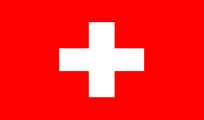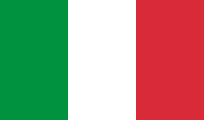A great idol
Bordeaux


Some of the most legendary wines grow in the world’s largest contiguous wine-growing region.
Burgundy


The stronghold of Pinot noir, Gamay and Chardonnay is known for its steadfast quality wines.
Champagne


The most sought-after sparkling wine in the world comes from Champagne.
Alsace


In the east of France, it is mainly white wine that is produced – and what white wine it is!
Loire


The Val de Loire comprises several wine-growing regions. The common denominator: their location along the Loire river.
Rhône


The Rhône Valley is the oldest and most diverse wine region in France.
France and red wine – synonymous?
Nowhere is this drink so closely anchored in the culture as in France. But time brings changes. Wine is practically a staple in France. Although: in 1970, the average French person still drank an incredible 100 litres of wine each year. Today, at 42 litres, it is less than half that. But who can imagine a meal à la française without rouge or blanc? France has also had more influence on wine culture around the world than any other country. Today, French grape varieties grow all over the world. And when it comes to research and teaching, the country is well ahead of the curve with its oenological faculties in Bordeaux, Montpellier and Dijon.
The vine probably came to the country with the Greek settlers who founded Massilia, today’s Marseille, around 600 BC. With the conquest of the Mediterranean coast and later the whole of Gaul by the Romans, viticulture spread northwards. Vines were first planted along the Rhône, then in Bordeaux and Burgundy in the third century AD, followed by the Loire and Champagne. There were even vines growing in Brittany in the sixth century. Viticulture did not lose importance after the Roman Empire crumbled. Quite the contrary: with the Christianisation of the Franconian Empire, fermented grape juice took on additional significance as communion wine. The monasteries played a key role in promoting viticulture.
Bordeaux at the centre of the world
At the same time, in the Middle Ages a form of agriculture was established that was very favourable to viticulture. Farmers offered to plant vines on fallow land and cultivate it at no cost until the first harvest five years later. From the sixth year onwards, they owned half of the plot in return; only an annual levy on the harvest was due. As a result, viticulture gained enormous ground and wine soon became France’s number one export.
Among the best customers: the English, especially for wines from Bordeaux – and no wonder, as this harbour city was English from 1137 to 1453. Later, the Dutch also entered the trade in French wine on a large scale. In 1855, French wine was even the centre of world attention when Napoleon III had the wine of Bordeaux officially classified for the World Exhibition in Paris.
The invention of terroir
Today, wine is grown on around 790,000 hectares in France – the second largest vineyard area in the world after Spain. In hardly any other country is viticulture as regulated as it is here. The INAO, the Institut National des Appellations d’Origine (now the Institut National de l’Origine et de la Qualité), was founded way back in 1935. It is responsible for the creation and monitoring of AOCs, the state-protected areas of origin. They are based on the terroir concept – the idea that an agricultural product is closely linked to the soil, the climate and its producer, their culture and traditional knowledge. This is why French wines are usually named after the wine region and not the grape variety. This way of thinking has certainly done a lot for the quality of French wines, and continues to do so. At the same time, however, France’s winemakers are increasingly struggling with competition from the rest of the world, where wines are often more accessible, more easily recognisable and ready to drink earlier.
A temperate climate for balanced wines
France’s climate is – with some exceptions – moderate. This ensures wines with a lot of flavour and a good balance between sugar and acidity. The most famous growing regions are undoubtedly Bordeaux with its long-standing premium wines based on Cabernet Sauvignon and Merlot, Burgundy with its red wines made from Pinot Noir and white wines made from Chardonnay, and, of course, Champagne.
The star of the Rhône is Châteauneuf-du-Pape, the wine favoured by the popes of Avignon. Here, as in the rest of the south of France, hot-blooded varieties such as Grenache, Syrah and Mourvèdre flourish. Alsace boasts brilliant white wines made from Riesling and Gewürztraminer. Rosé is currently enjoying a boom in France, and rosé fans will be delighted by what they find in Provence.





Validate your login